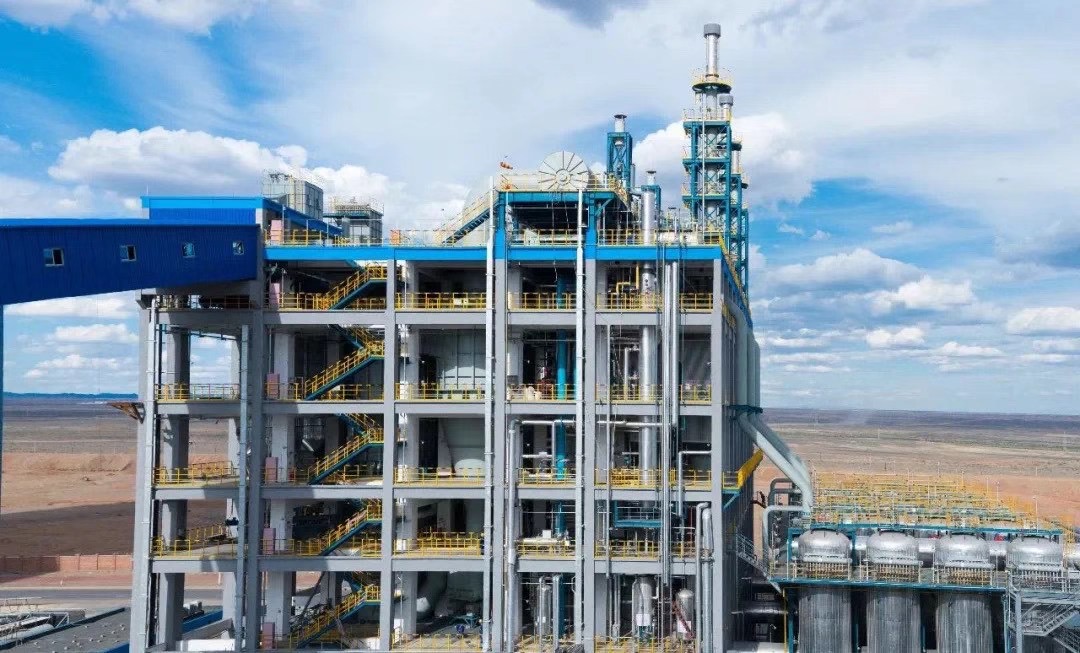On September 4, the "Atmospheric Oxygen-Enriched Circulating Fluidized Bed Gasification Technology for High-Alkali Coal to Syngas", jointly developed by the Institute of Engineering Thermophysics, Chinese Academy of Sciences (CAS), Xinjiang Yihua Chemical Co., Ltd., and CAS Hefei Gasification Technology Co., Ltd. (hereinafter referred to as ZHGAS), passed a scientific and technological achievement appraisal organized by the China Petroleum and Chemical Industry Federation (CPCIF) in Beijing. The appraisal committee, led by Academician Jin Yong of the Chinese Academy of Engineering and Gu Zongqin, Chairman of the China Nitrogen Fertilizer Industry Association, unanimously concluded that the technology "reaches internationally advanced levels overall, achieves global leadership in high-alkali coal gasification, and holds significant value for Xinjiang’s high-alkali coal development and regional economic growth."

Experts noted that Xinjiang’s Zhundong Coalfield, China’s largest integrated coal reserve with predicted reserves of 390 billion tons, benefits from this technology’s expanded coal adaptability for CFB gasification, providing a complete solution for the clean, efficient utilization of Xinjiang’s abundant high-alkali coal.
Zhu Zhiping, Director of the CFB Laboratory at CAS’s Institute of Engineering Thermophysics, explained that Xinjiang’s high-alkali coal poses challenges such as poor viscosity-temperature characteristics, low slurryability, and high alkali metal content, making it unsuitable for entrained-flow gasification. Additionally, its high volatility generates excessive tar in fixed-bed systems, raising environmental concerns.
The CAS-developed technology addresses these issues through innovations in:
Temperature zoning control within the gasifier.
Flow field and reaction regulation.
Waste heat recovery system optimization.
Dry slag discharge with gas-sealed slag pipes.

These advancements significantly improve gasification efficiency, system energy utilization, and equipment reliability while reducing wastewater and eliminating tar/phenolic pollution.
Yang Xiaoqin, Chief Engineer of Xinjiang Yihua Chemical, highlighted the technology’s application in upgrading the company’s synthetic ammonia gasification system. Three 720-ton/day CFB gasifiers replaced 20 original fixed-bed units, processing Xinjiang Yihua’s high-alkali coal to produce syngas for ammonia, methanol, and melamine. Since its successful ignition on September 6, 2020, the system has achieved stable operation, with single gasifiers running continuously for 210 days and all three units exceeding 330 days.
From July 10–13, the system passed a 72-hour continuous operation assessment by CPCIF. Liu Ying, Senior Engineer of Yankuang Xinjiang Coal Chemical Co., noted its superior performance in coal consumption (per unit product), oxygen demand, and water usage (0.89 t/kNm³ (CO+H₂), including steam production).
The CGAS gasification technology, developed over a decade by CAS’s Institute of Engineering Thermophysics, was selected for the CAS Hongguang Initiative, a key national program for industrializing scientific breakthroughs. As the initiative’s designated platform, ZHGAS has driven CFB gasification’s commercialization, demonstrating advantages such as broad coal adaptability, high automation, low operating costs, strong environmental benefits, and scalability for small-to-medium ammonia plants. The technology has also been validated for anthracite and other coal types.
During the 14th Five-Year Plan, coal clean utilization is prioritized under China’s "Ten Major Energy Conservation Projects." ZHGAS and the Institute of Engineering Thermophysics will advance "dual-drive" strategies—aligning with industry needs and innovating continuously—to expand CGAS gasification applications and deliver clean energy solutions for high-quality coal chemical development.
Gasification Knowledge Tips
Fixed-Bed Gasification Technology
Fixed-bed gasification requires coal with high thermal stability and mechanical strength, ideally high-quality anthracite lump coal or briquettes. However, high-alkali coal exhibits poor thermal stability and tends to pulverize during gasification, increasing bed resistance and gas-phase particle carryover. Additionally, the high volatile content of Xinjiang Zhundong high-alkali coal generates tar and phenolic byproducts, complicating wastewater treatment and reducing economic viability. Thus, high-alkali coal is unsuitable for fixed-bed gasification.
Entrained-Flow Gasification Limitations
Zhundong high-alkali coal has poor slurryability, failing to meet the requirements for water-slurry gasification. Its low ash viscosity also prevents effective slag formation in entrained-flow gasifiers, and its thermal stability falls short of slagging gasification standards, limiting production capacity.
Advantages of Atmospheric Oxygen-Enriched CFB Gasification
The newly certified Atmospheric Oxygen-Enriched Circulating Fluidized Bed (CFB) Gasification Technology demonstrates:
Broad Coal Adaptability: Suitable for Xinjiang Zhundong high-alkali pulverized coal without preprocessing (e.g., pulverization or slurry preparation).
Robust Ash-Melting Tolerance: Accommodates fluctuations in coal ash fusion temperatures.
Environmental Benefits: Eliminates tar and phenolic contaminants in gas and wastewater, reducing environmental impact.
Operational Simplicity: Streamlined process design enhances reliability and reduces operational complexity.